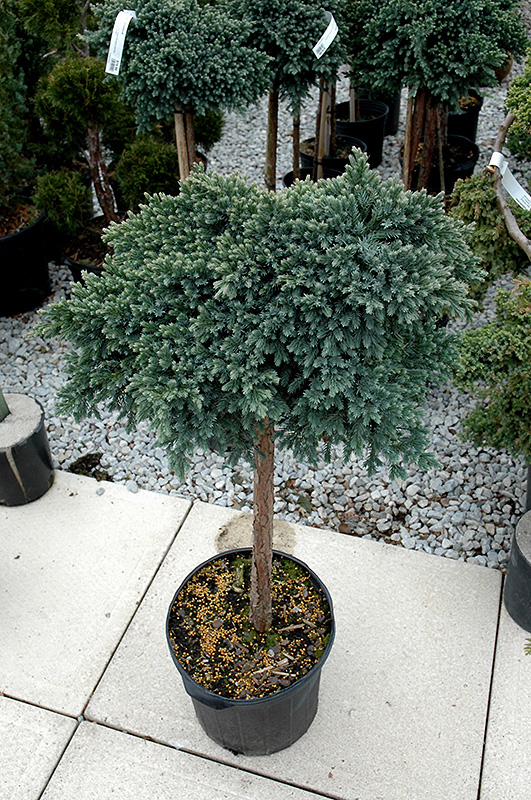Blue Star Juniper
Juniperus squamata 'Blue Star (tree form)'
Height: 6 feet
Spread: 3 feet
Sunlight:
![]()
Hardiness Zone: 4a
Other Names: Singleseed Juniper
Description:
A highly ornamental form of this juniper trained to grow on a single trunk; foliage is a dense, silvery blue ball, needles are radially arranged around the branches, giving the appearance of stars; an excellent color and interest accent for the garden
Ornamental Features
Blue Star Juniper is primarily valued in the landscape or garden for its highly ornamental lollipop-like shape. It has attractive blue evergreen foliage which emerges silvery blue in spring. The needles are highly ornamental and remain blue throughout the winter.
Landscape Attributes
Blue Star Juniper is a dense evergreen dwarf tree, selected and trained to grow in a small tree-like form with the primary plant grafted high atop a standard. It lends an extremely fine and delicate texture to the landscape composition which can make it a great accent feature on this basis alone.
This dwarf tree will require occasional maintenance and upkeep, and is best pruned in late winter once the threat of extreme cold has passed. It has no significant negative characteristics.
Blue Star Juniper is ideal for use as a garden accent or patio feature, and is recommended for the following landscape applications;
- Accent
- Vertical Accent
- General Garden Use
Planting & Growing
Blue Star Juniper will grow to be about 6 feet tall at maturity, with a spread of 3 feet. It tends to be a little leggy, with a typical clearance of 2 feet from the ground, and is suitable for planting under power lines. It grows at a slow rate, and under ideal conditions can be expected to live for approximately 30 years.
This dwarf tree should only be grown in full sunlight. It is very adaptable to both dry and moist growing conditions, but will not tolerate any standing water. It is considered to be drought-tolerant, and thus makes an ideal choice for xeriscaping or the moisture-conserving landscape. It is not particular as to soil type or pH. It is highly tolerant of urban pollution and will even thrive in inner city environments. This is a selected variety of a species not originally from North America.


